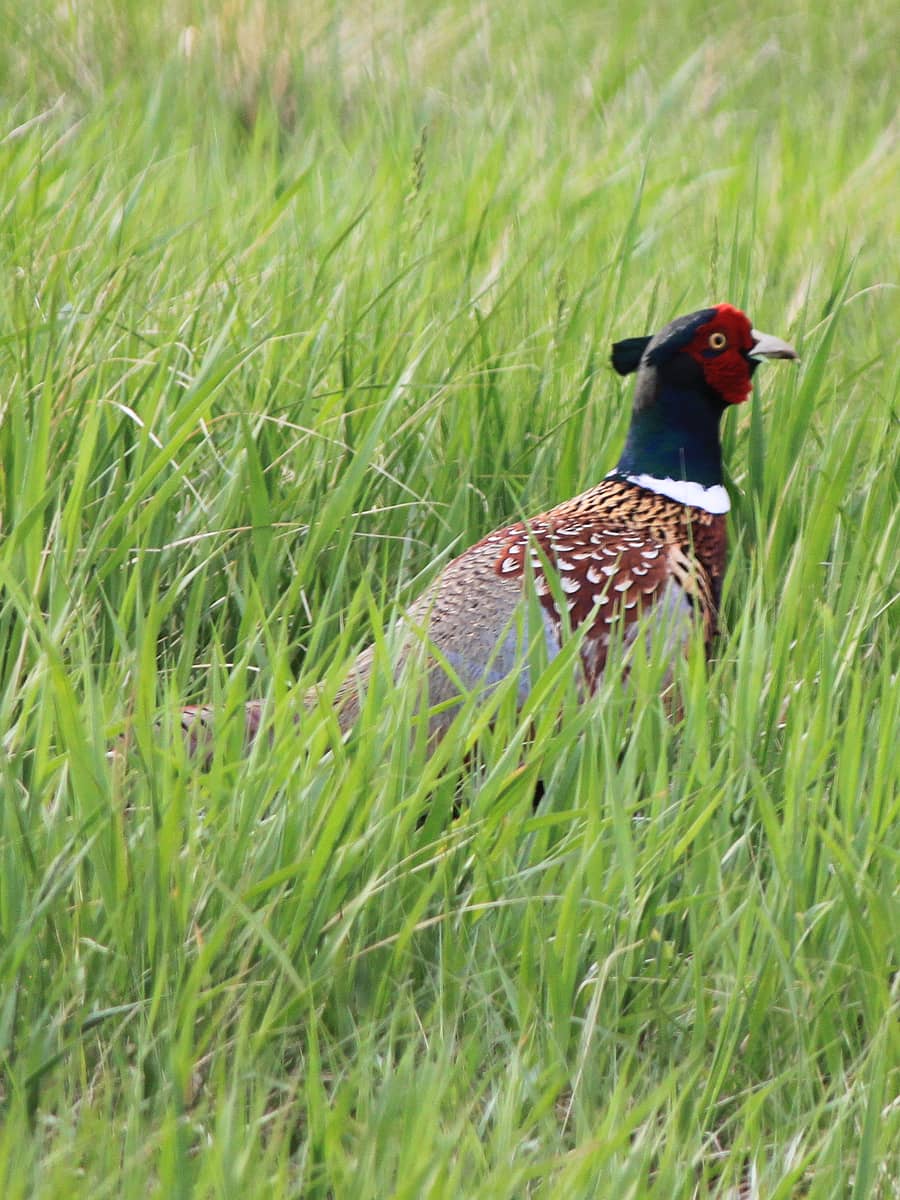
Pheasants Forever is working to restore grassland acres in the prairie pothole region through its Soil Health & Habitat program. The initiative, created with financial support from Purina, benefits wildlife like pheasants, ducks and deer while supporting landowners looking to add habitat and cover crops which limits soil erosion and improves water quality. Simonson Photo.
By Nick Simonson
Pheasants Forever’s (PF) Soil Health and Habitat program, an initiative created with corporate support from Purina Inc., is helping to establish more grassland habitat and better soil and water quality throughout the nation’s Prairie Pothole region in North Dakota, South Dakota, Minnesota and Iowa.
Now entering its third sign-up, the partnership is helping farmers and operators fund the establishment of prairie plantings, use of cover crops, and other effective means of expanding areas for wildlife. According to PF Conservation and Ag Program Manager Tanner Bruse, the total impact of the partnership will reach thousands of acres and help advance huntable populations of birds and game along with watchable species such as songbirds.
“It incorporates four different states; we’re not talking several hundred acres, we’re talking several thousand acres and in total we’ll be implementing over 7,000 acres in this program,” Bruse relates.
The third sign-up for the Soil Health and Habitat program pays operators up front one-time stipends of 250 dollars per acre in all states the initiative covers, representing an increase from 150 dollars in the last two sign ups for acres in both North Dakota and South Dakota. Additionally, the program offers a cost-share stipend of 150 dollars for seed and establishment expense in prairie plantings and a 20 dollar per acre stipend for the establishment of cover crops which provide cover for pheasants and other game, while holding topsoil in place. The term of each contract under the program lasts for five years.
In addition to the financial support received through the program, operators will also get precision agriculture services through Truterra, a sustainability-focused ag technology company that plots out the most productive acres for planting on a farm and identifies marginal lands which are better suited for enrollment in habitat programs. Via its Insights Engine Stewardship Report Card, the company helps those enrolled in the Soil Health and Habitat program pick out places where grassland and cover crop plantings would work best and have the greatest impact on soil and water quality, along with making sustainable wildlife habitat.
“The Prairie Pothole Region in general is important because it is a core region in the Midwest for pheasants and other wildlife, in addition, it’s also home to highly productive crop ground, where this program can help identify and find a balance between profitable farming operations and also including high-quality habitat through private land investment,” Bruse explains.
Ultimately, the program benefits hunters, not only providing those places where young birds and game are born, raised and recruited into a sustainable population season after season, but it also provides an avenue into other programs which benefit hunters established in each state tied to the initiative.
“This program is directly putting habitat on the ground, providing more places to go, creating more opportunity for hunters and wildlife,” Bruse stresses, “in addition, these acres that we’ve worked on, we have also had producers that have opted in and enrolled into walk-in access program which provides public access on private grounds, which is another huge win-win,” he concludes.
The third sign-up session is underway on a first-come, first-served basis and will remain open continuously for the program until all funds have been exhausted. More information on the Soil Health and Habitat Program and enrollment forms can be found at pheasantsforever.org/soilhealthandhabitat.
